Set out on a culinary journey that blends tradition with innovation in a Japanese Home Cooking Experience. As participants step into the world of Japanese cuisine, they are greeted with a tantalizing mix of cultural heritage and culinary finesse. The intricate balance of flavors and the art of presentation converge to offer a sensory exploration like no other.
But what truly sets this experience apart is the opportunity to not just observe but actively participate in the creation of authentic Japanese dishes. Each moment in the kitchen unfolds a new chapter in understanding and appreciation, making this culinary escapade a must for those seeking more than just a meal.
Just The Basics
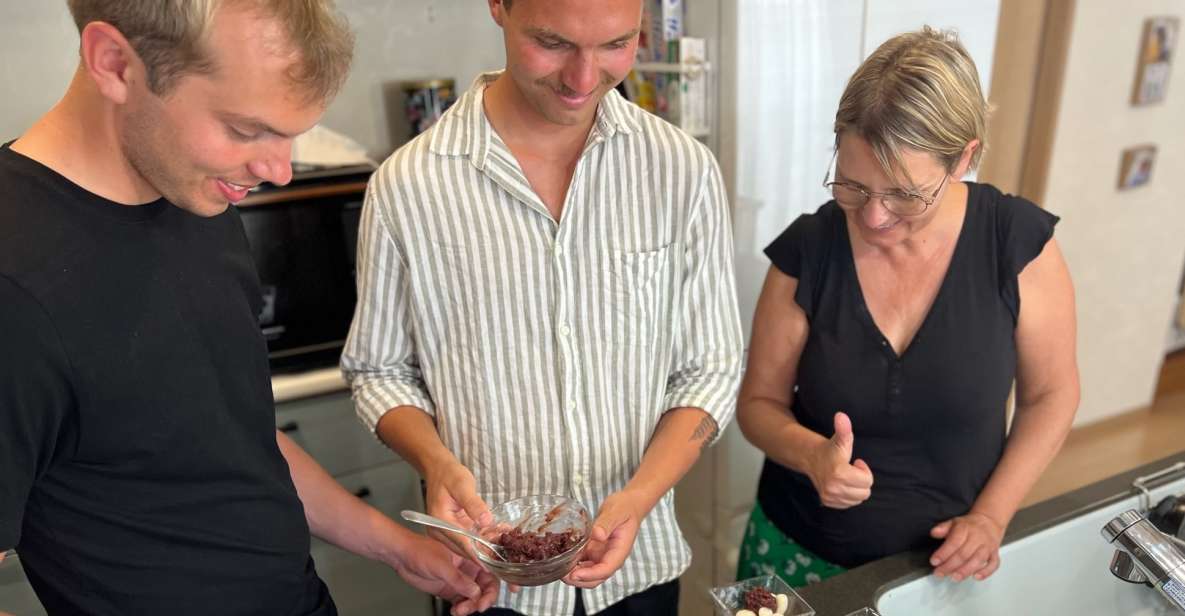
- Hands-on culinary activities in Japanese home cooking
- Insider knowledge on authentic Japanese dishes
- Cultural significance of recipes explored
- Insights into Japanese house interiors and culinary traditions
Here's some other great tours and experiences nearby we think you'll like.
Experience Details

Explore the intricacies of Japanese home cooking with a hands-on culinary experience that immerses participants in traditional dishes and cultural insights. Insider tips and culinary exploration await those who embark on this journey.
Participants can expect to receive insider knowledge on how to prepare authentic Japanese dishes while gaining a deeper understanding of the cultural significance behind each recipe. This experience offers the opportunity to not only learn how to make popular Japanese dishes but also provides insights into Japanese house interiors.
With a patient and relatable teacher and a personable and funny host, participants are sure to enjoy a positive and enriching experience. Positive reviews and feedback further attest to the quality of this culinary exploration.
Highlighted Inclusions
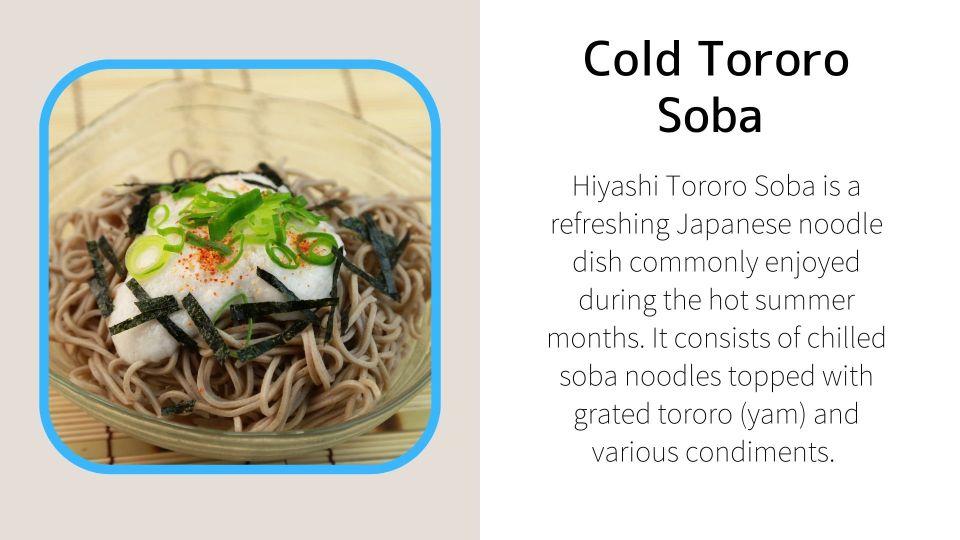
The Japanese home cooking experience presents a curated selection of culinary activities and cultural insights that promise an immersive and enriching journey into traditional dishes. Participants can expect to engage in recipe sharing, fostering a deeper understanding of Japanese cuisine, and culture, gaining valuable insights into the traditions and customs surrounding food preparation.
In this experience, individuals will have the opportunity to:
- Share and learn authentic recipes passed down through generations, promoting a sense of heritage and culinary appreciation.
- Immerse themselves in the vibrant cultural practices intertwined with Japanese cooking, enhancing the overall understanding of the dishes being prepared.
- Engage in hands-on experiences that go beyond mere cooking, fostering a profound connection with the culinary artistry of Japan.
Course Options
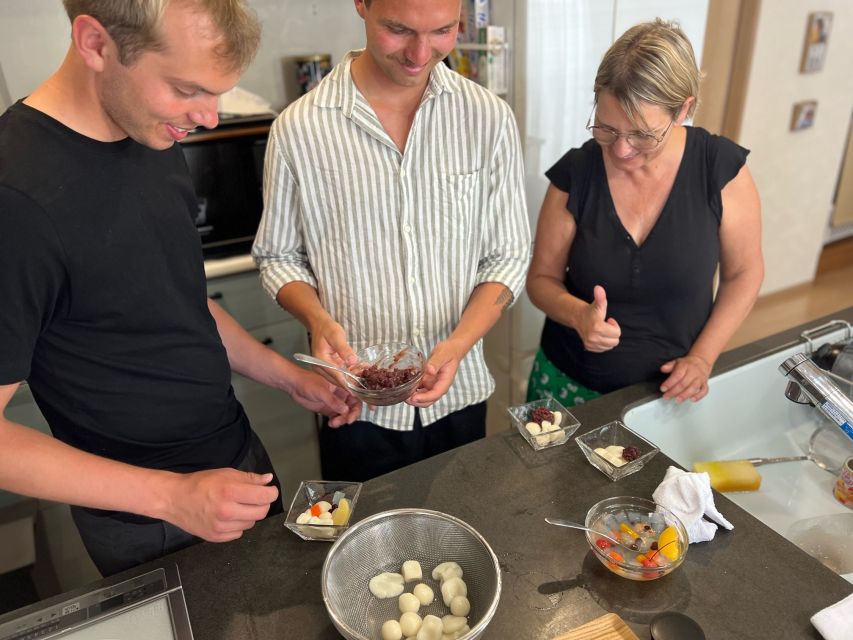
Highlighted within the Japanese home cooking experience are diverse course options that cater to different tastes and preferences, offering a flavorful journey through traditional Japanese cuisine. These courses not only provide an opportunity to learn authentic cooking techniques but also facilitate a cultural exchange between hosts and guests.
From the Standard Japanese Course featuring Temari Sushi and Miso soup to the Kansai Basic Course with Okonomiyaki and Takoyaki, participants can explore a variety of flavors and culinary practices. The Combi Course, blending Takoyaki and Temari Sushi, adds a unique twist to the experience.
Allergy Accommodations
When considering dietary restrictions or preferences, communication in advance ensures a seamless and enjoyable Japanese home cooking experience. It’s essential for guests to inform the host about any dietary preferences or allergies to ensure a tailored and safe culinary experience.
Here are some key points to consider in accommodating allergies:
- Dietary Preferences: Guests can communicate their dietary preferences such as vegetarian, vegan, gluten-free, or other specific requirements.
- Ingredient Substitutions: The host can make ingredient substitutions to accommodate allergies or dislikes, ensuring everyone can enjoy the meal.
- Advance Communication: It’s advised to inform the host about any allergies or specific dislikes beforehand to allow for proper meal planning and adjustments.
Learning Opportunities
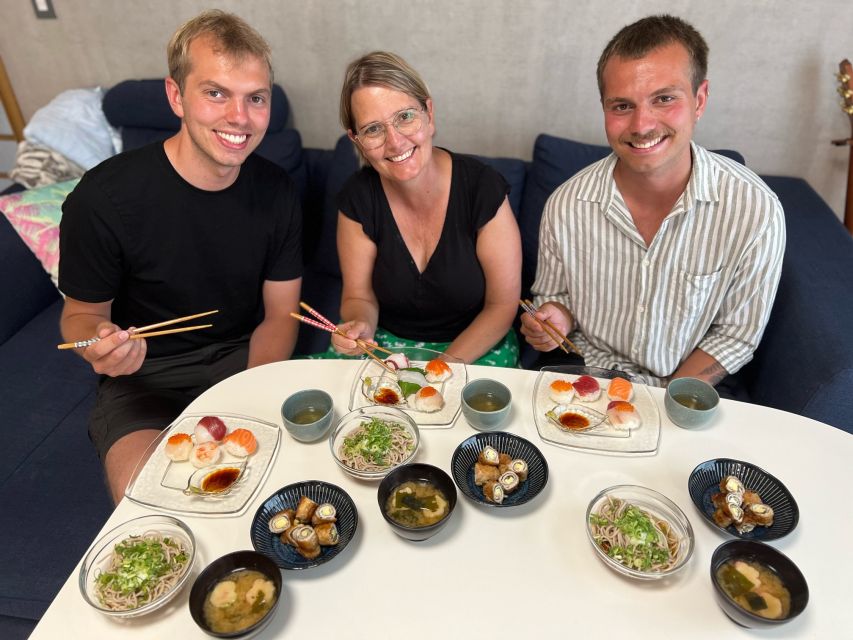
Engaging in the Japanese home cooking experience opens doors to valuable insights and culinary skills that extend beyond the kitchen. This experience provides a unique opportunity for culture through hands-on learning. Participants not only learn to prepare authentic Japanese dishes but also gain a deeper understanding of the traditions and customs associated with Japanese cuisine. The culinary skills acquired during these sessions are transferable, allowing individuals to recreate these dishes at home and share this cultural experience with others. Below is a table highlighting the key learning opportunities in the Japanese home cooking experience:
| Learning Opportunities | Description |
|---|---|
| Cultural immersion | Gain insights into Japanese traditions and customs |
| Culinary skills | Develop the ability to prepare authentic Japanese dishes |
Teacher and Host Qualities
The demeanor and expertise of the instructor play a pivotal role in enhancing the Japanese home cooking experience. A relatable teacher and a personable host can significantly impact the overall enjoyment and educational value of the activity. Here are three key qualities that contribute to a memorable experience:
- Warm and inviting personality that puts participants at ease
- Ability to communicate complex cooking techniques in an understandable manner
- Sense of humor and charm that adds a touch of fun to the learning process
Together, these qualities create a welcoming and engaging environment where participants can not only learn how to prepare delicious Japanese dishes but also forge meaningful connections with their instructor and host.
Location Information
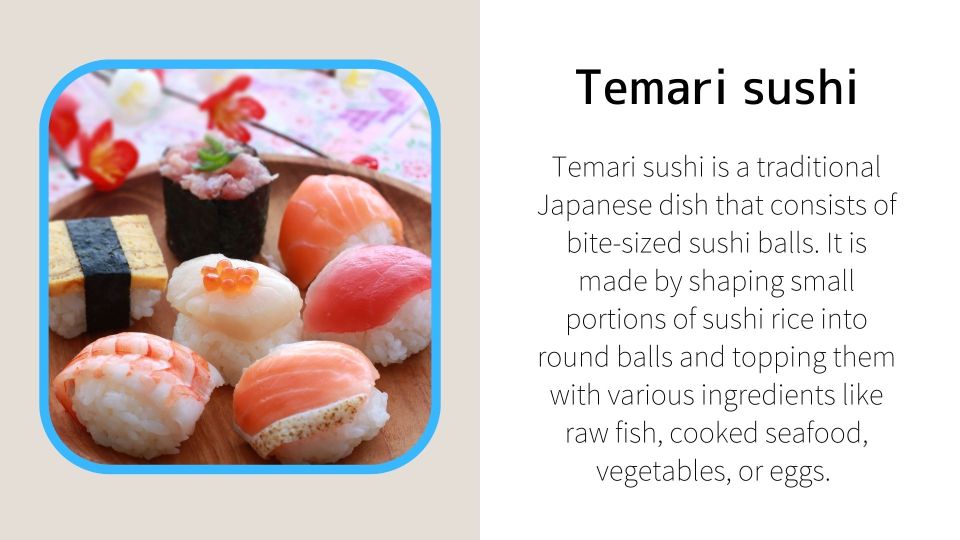
Located in the vibrant Kansai Region of Osaka, the Japanese home cooking experience offers a unique opportunity to explore the culinary traditions of Japan in an authentic setting. Participants can enjoy local cuisine, experiencing firsthand the flavors and techniques that make Japanese food renowned worldwide.
The location in Osaka is ideal for foodies looking to explore traditional Japanese dishes beyond sushi and ramen. Travel tips include considering the nearest station for convenient access and planning additional activities in Osaka to complement the culinary adventure.
With its rich culinary history and diverse offerings, Osaka provides a dynamic backdrop for this hands-on cooking experience that promises to be both educational and delicious.
Booking Process
Enjoy the culinary wonders of Japan by navigating the streamlined booking process for the Japanese home cooking experience in Osaka’s vibrant Kansai Region.
The reservation process offers flexibility with payment options, ensuring a hassle-free booking experience. Language support in Japanese and English caters to a diverse range of visitors, enriching the cultural exchange during the activity.
The local culture shines through as guests can communicate their specific preferences, allergies, or dislikes in advance, showcasing the host’s dedication to providing a personalized experience.
Whether opting for the Standard Japanese Course, Kansai Basic Course, or the Combi Course, the booking process sets the stage for a seamless journey into the heart of Japanese home cooking.
Frequently Asked Questions
Can Participants Bring Their Own Ingredients to the Japanese Home Cooking Experience?
Participants can communicate ingredient preferences, dietary restrictions beforehand. Cooking equipment and recipe modifications may be accommodated. Providing advance notice is crucial for specific dislikes or allergies. Participants should inquire about bringing personal ingredients for clarity.
Are Children Allowed to Join the Cooking Class and Are There Any Age Restrictions?
Children are welcome to participate in the cooking class with parent involvement. There are no specific age restrictions. The hands-on learning experience is family-friendly, providing an opportunity for all to enjoy and learn together.
Is There a Dress Code or Any Specific Attire Recommended for the Cooking Session?
Traditional attire is not required for the cooking session. Participants can wear comfortable clothing. The focus is on learning cooking techniques, not dress code. Emphasis is on enjoying the experience and engaging in the culinary process.
Are There Any Cultural Etiquettes or Customs That Participants Should Be Aware of During the Cooking Experience?
Participants should be mindful of cultural customs and cooking etiquette during the experience. Understanding Japanese cultural norms like removing shoes indoors and showing respect to hosts is key. Following these practices enhances the immersive Japanese home cooking experience.
Can Participants Take Home Leftovers or Any Extra Food Prepared During the Class?
Participants have the opportunity to take home leftovers from the class, depending on the policy. Food sharing opportunities may also be available for those interested in trying a variety of dishes.
Final Words
To sum it up, the Japanese home cooking experience offers a unique opportunity for participants to enjoy the rich culinary traditions of Japan. With a blend of cultural insight and hands-on learning, guests can explore the intricacies of Japanese cuisine while enjoying the delicious flavors of popular dishes.
The friendly and knowledgeable host ensures a personalized and enjoyable experience, making it a memorable journey through flavors and techniques for all participants.
